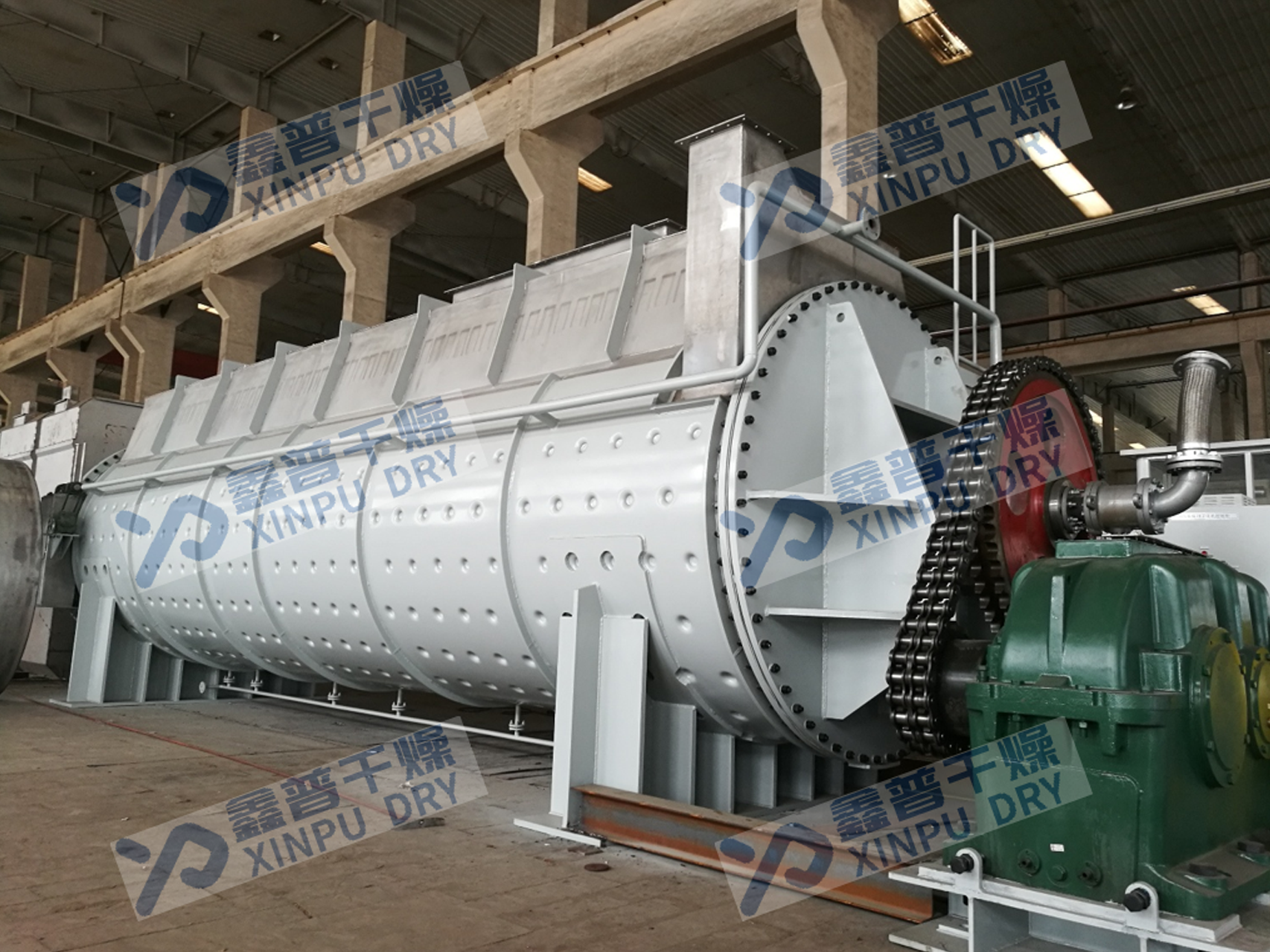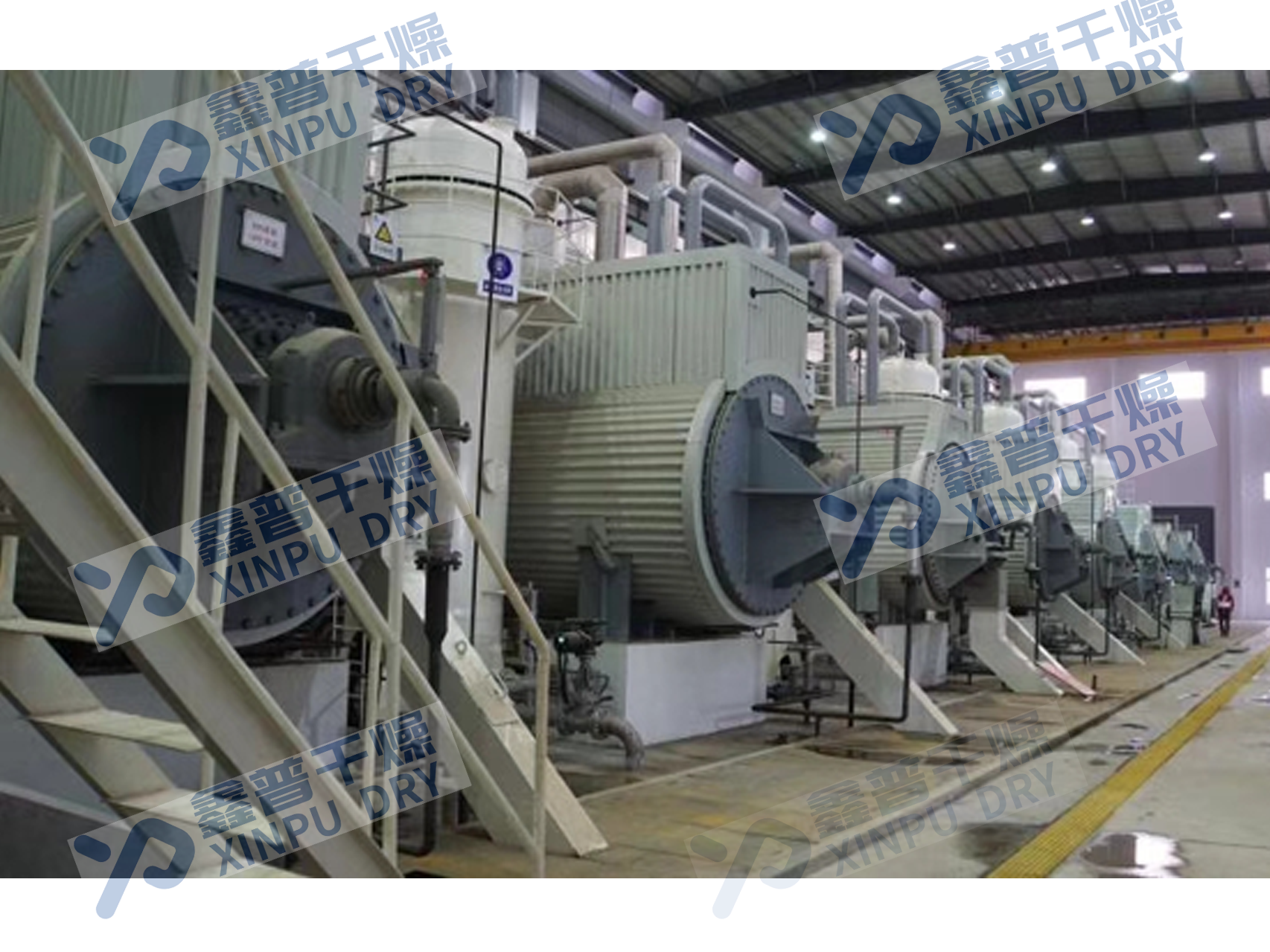Classification of sludge dryer
The sludge dryer is equipped with mixing blades in the equipment: wedge-type blade dryer (double-shaft or four-shaft); Disc type-disc dryer (single shaft).
Product introduction
The wet material is fully contacted with the hot surface of the heating carrier under the agitation of the blades, so as to achieve the purpose of drying, and the structural form is generally horizontal. Sludge dryers are divided into hot air type and conduction type. In the form of hot air, the material is directly contacted with the dried material through a heat carrier (such as hot air) and dried; in the form of conduction, the heat carrier is not directly contacted with the dried material, but the hot surface is in conductive contact with the material and dried. Sludge covers the leaves and the relative movement with the leaves produces scrubbing effect. Hollow blades are densely arranged on the hollow shaft, and the heat medium passes through the blades through the hollow axial flow. The heat transfer area per unit effective volume is very large (generally, the area of a single twin-shaft blade is about 200m2 or less; The area of a single four-shaft blade is ≤ 400m2), and the temperature of the heat medium ranges from 60℃ to 320℃, which can be steam or liquid, such as hot water and heat transfer oil. Indirect conduction heating, the heat is used to heat materials, and the heat loss is only through the insulation layer of the device body and moisture removal to the environment.
Performance characteristics
◎ The equipment structure is compact, and the sludge dryer device occupies a small area. The heat required for drying is mainly provided by the wall surface of hollow blades arranged on the hollow mandrel, and the heat transfer of the wall surface of the jacket only accounts for a small part. Therefore, the heat transfer surface of the unit volume equipment is large, which can save the occupied area of the equipment and reduce the capital investment.
◎ High heat utilization. The sludge dryer is heated by conduction heating, and all heat transfer surfaces are covered with materials, thus reducing heat loss; The heat utilization rate can reach above 85%.
◎ The blade has a certain scrubbing ability, which can improve the heat transfer function of the blade. The dispersion force generated by the joint movement of the inclined surface of the rotating blade and the particle or powder layer makes the sludge attached to the heating inclined surface have the cleaning function. In addition, due to the reverse rotation of the blades of the two shafts, the heat transfer is uniform and the heat transfer effect is improved.
◎ Continuous and fully enclosed operation can be realized, and labor and dust emission can be reduced.
◎ In terms of tail gas treatment, the system generally adopts two forms: normal pressure or negative pressure. According to different situations, the exhaust air volume is reduced as much as possible, thus reducing the cost of tail gas treatment. For the odor of sludge evaporation, another deodorization system can be used to treat it and discharge it up to standard.
◎ Our company can design a high vacuum paddle sludge dryer for toxic and high-risk chemical sludge containing solvents, and dry it at low temperature. In this way, not only can the solvent be directly recovered, but also the exhaust emission can be greatly reduced, and the safety and environmental protection performance are greatly improved.
Innovation and improvement design of key technology of products
◎ The company absorbed the technical concept of sludge dryer, innovatively designed the second generation single-axis, double-axis or four-axis structure, and put it into production and application in large quantities;
◎ The overall design of the bearing seat and the overall lathe processing, and the sludge dryer can optionally add a cooling device;
◎ The cylinder, bearing and shaft are designed to slide freely due to thermal expansion, and the overall frame of the sludge dryer is designed;
◎ Integral reinforced design ensures strength and service life;
◎ The blades are integrally welded, with better strength; Scrapers can be added according to the material state, and the cutting and copying performance is better;
◎ The structural design is more compact, and the area of a single sludge dryer can be designed as a large sludge dryer ≤ 500m2;
◎ Direct drive structure design, more balanced operation, reducing the swing and tightness problems caused by chain drive;
◎ The company's unique processing and assembly technology makes the concentricity of the equipment more secure and the sealing performance at both ends more superior;
◎ According to different situations, semi-circular jacket heating and integral jacket heating can be designed;
◎ Different discharging forms can be designed according to the requirements of materials, so as to ensure the drying residence time of materials and further improve the comprehensive efficiency.
◎ The feed design for the company's special bridge prevention.
Vacuum sludge drying system: vacuum blade dryer; Vacuum disc dryer.
It consists of sealed feeding system, vacuum sludge dryer, sealed discharging system, tail gas treatment system and other subsystems. The system realizes the safe control of operation by controlling combustible components, temperature, pressure and oxygen. Drying has high applicability for sludge drying and recovery with oil and organic solvent, and it is one of the systems with high safety in sludge drying technology at present. Based on the atmospheric drying equipment, the equipment has improved the design, enhanced the pressure resistance of the system, realized the high and negative pressure environment of the system, and effectively prevented the accumulation of deflagration gas in the drying bin.







